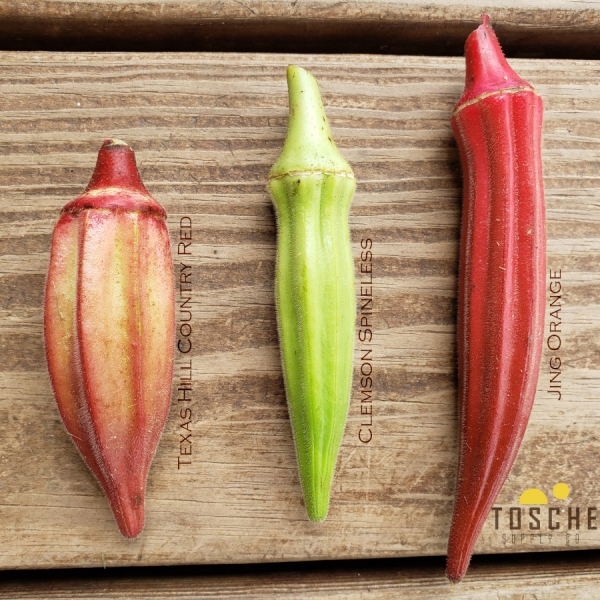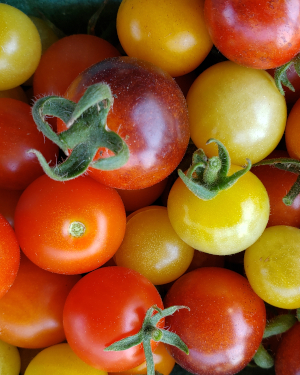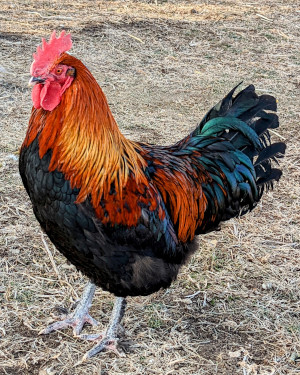But there's so much more to this overlooked, seed pod veggie! And it grows fantastically in our hot, humid summers.
A tender annual, okra does best direct-seeded once all danger of frost has passed, and the soil has warmed up to around 70 degrees F. This year, I planted mine on May 24th, two seeds per hole, 12-18" apart. Once they were 3-4" tall, I pinched off one seedling if both had germinated. Then comes the waiting. It feels like they are soooo slow to grow big enough to flower, but once they do, the pods grow extremely fast. I check mine daily, or at the very least every other day, picking any pods that are 3-4" long.
So, what do you do with okra once it's picked? Well, I planted some different varieties this year that were better suited to different things. I love breaded, deep-fried okra, and for that I prefer a fat, squatty variety like Texas Hill Country Red. At their best size, they are a little bigger than a quarter in diameter, and therefore make nice big slices.
Deep Fried Okra
- Just cut the pod up into thick coin-sized slices, about three chunks per pod.
- Dip the slices in buttermilk or beaten egg
- Shake them up in a seasoned cornmeal & flour mixture. Salt, pepper, garlic powder, and cayenne pepper are all fantastic seasonings to use. You could also dip them in panko, though that's not exactly "traditional."
- Deep fry at 375 degrees for 2-3 minutes, until golden brown, and spread on paper towels to drain.
- Enjoy them fresh and hot!
The thinner varieties, like the gold standard Clemson Spineless, or the exotic-looking Jing Orange are amazing picked small and pickled. Here's a great refrigerator pickle recipe:
You'll need 5% vinegar - this can be all distilled white vinegar, a half-and-half mix of distilled white and apple cider vinegar (my mom's favorite blend), or you can get creative and use white or red wine vinegar for some or all of the vinegar. Just make sure whatever you use is 5%. Don't use homemade vinegar for this, as the acidity percent is not guaranteed on homemade brews.
Pickled Whole Okra
- Sterilize pint jars by boiling.
- Make a brine of 1 cup vinegar, 1 cup water, 1 tablespoon kosher or pickling salt. (This brine mixture can be doubled, tripled, etc, as necessary). Bring the brine to a boil.
- Add the following to each pint jar: 1 clove minced garlic, 3-4 peppercorns, 3/4 teaspoon dill seed, 1/4 teaspoon yellow mustard seeds. (You could also add red pepper flakes or pickling spice if you like).
- Trim the stems of the okra pods down to 1/4 inch and insert the pods into pint jars whole, alternating stem side up with stem side down, to make best use of the space. Keep the okra an inch to a half inch from the top of the jar.
- Pour boiling brine into the jars, covering the okra and leaving half an inch of headspace.
- Use a thin knife to go around the inside of the jar, dislodging any air bubbles. Top off with more brine if necessary to reach the half inch of headspace.
- Add lids to the jars (I like the twist-on plastic lids for this), allow jars to cool, then move to the refrigerator.
- Wait at least one week to try them!





